Looking for the ideal furry friend for your home? Look no further! Discover the Labradoodle – a remarkable crossbreed that combines the best qualities of the Labrador Retriever & the Poodle. But what makes them such fantastic family pets? Let’s jump into the Labradoodle world and see why.
Labradoodles are renowned for their hypoallergenic coats, making them an excellent choice for allergy sufferers. And these intelligent dogs are not only easily trainable but also incredibly sociable, making them ideal family pets. Their gentle nature – combined with their playful spirit – ensures they fit into various household settings.
There’s a lot more to explore, so keep reading to get all the insights you need to make an informed decision about welcoming a Labradoodle into your life.
The information provided herein is for informational purposes only. Please refer to our disclaimer for more details..
- Quick Facts
- Labradoodle Dog Breed Overview
- Labradoodle History
- Labradoodle Appearance and Color
- Labradoodle Size and Weight
- Labradoodle Grooming Needs
- Labradoodle Personality and Temperament
- Labradoodle Nutrition and Feeding
- Labradoodle Training & Socialization
- Labradoodle Exercise Needs
- Labradoodle Common Health Issues
- Ideal Labradoodle Owner
- Labradoodle With Children and Other Pets
- Labradoodle Breeders
- Labradoodle Rescue Groups
- Labradoodle FAQs
- Conclusion
Quick Facts
Image credits: Jessica D. Vega
- History: Originated in 1989 when a Labrador Retriever and a Standard Poodle were crossed to create a hypoallergenic guide dog.
- Size: Labradoodles come in three main sizes: Standard (22-24 inches, 50-65 pounds), Medium (18-20 inches, 30-45 pounds) & Miniature (14-16 inches, 15-25 pounds).
- Appearance: Labradoodles have a body shape like a Lab – with features such as eyes with really long eyelashes and ears covered in curly hair.
- Coat Types and Colors: They have 3 kinds of coats, wool, fleece, and hair. You can find them in colors like chocolate, black, cream, apricot, and others.
- Hypoallergenic Qualities: Thanks to Poodles, Labradoodles don’t usually cause allergies.
- Grooming Needs: They need regular brushing, occasional bathing, and professional grooming every 2-3 months.
- Temperament: Labradoodles are friendly, smart, faithful, and fun. Their personality is a mix of traits from both Labrador and Poodle breeds.
- Compatibility: They’re mostly good with kids and other animals, but it’s best to watch them around young kids.
- Exercise: Need 30-60 minutes of daily exercise, including on-leash walks & off-leash play.
- Nutrition: Labradoodles require 1 to 2.5 cups of high-quality dry food daily, divided into two meals while puppies need more meals per day.
- Common Health Issues: Generally healthy – but they can get problems like hypothyroidism, epilepsy, allergies, diabetes, eye issues, ear infections, hip & elbow dysplasia, and heart disease.
- Ideal Owners: Best for moderately active people who can give them regular exercise and mental challenges.
- Cost: Buying from a good breeder costs between $2,000 and $4,000. And, adopting from a rescue group costs between $100 and $500.
- Lifespan: They live for about 12 to 16 years.
- Dog Breed Group: Hybrid Dogs (Designer)
Labradoodle Dog Breed Overview
Image credits: Bruce Williamson
The Labradoodle is a special mix of a Labrador Retriever and either a Standard or Miniature Poodle. This breed is getting more and more popular, especially with families. This breed stands out for its hypoallergenic coat – which varies in texture from curly to straight, catering to those with allergies. The colors of their coats can be chocolate, black, cream, apricot, & other shades, just like their parent breeds.
These dogs are friendly and gentle. And this makes them perfect for families and kids. Their intelligence and eagerness to please render them trainable using positive reinforcement methods. Labradoodles have a lot of energy from their Labrador side. So they need regular exercise and activities to keep their minds and bodies healthy.
While Labradors contribute to their affectionate and playful side Poodles contribute the hypoallergenic quality to the Labradoodle’s coat, making them a suitable choice for allergy sufferers. With all these qualities mixed together, Labradoodles are loved by many. And they’re great for different kinds of homes.
Labradoodle History
The Labradoodle’s history begins in 1989 with the Royal Guide Dogs Association of Australia’s effort to create a hypoallergenic guide dog. Wally Conron led this project. He mixed a Standard Poodle with a Labrador Retriever. His goal was to create a dog that was friendly and easy to train like a Labrador – but with a Poodle’s coat that didn’t shed much and was smart. And this effort led to Sultan, the very first Labradoodle. Sultan became a guide dog for a woman in Hawaii who couldn’t see.
In Australia, people often call Labradoodles “Cobberdogs.” The breed became very popular, especially for its non-allergenic fur & friendly nature. The Labradoodle’s journey from a specific functional breeding to a beloved family dog highlights its adaptability and endearing qualities.
These days, groups like the Australian Labradoodle Association and the International Australian Labradoodle Association are working hard to make the Labradoodle an officially recognized breed. And they focus on breeding over many generations to keep the breed’s qualities consistent. In America, Labradoodles weren’t well-known at first. But by the early 2000s, they became very popular.
Labradoodle Appearance and Color
Image credits:Aurelio Uribe-Wright
The Labradoodle exhibits a fascinating range of appearances – owing to its mixed heritage from Labrador Retrievers and Poodles. Let’s talk about their main features:
- Physical Build: These dogs are usually sturdy and rounder than the slim Poodle. They have faces that look a lot like Labradors.
- Ears: Their ears lay flat against their heads and are level with their eyes. And the ears often have curly fur on the outside.
- Eye and Nose: Labradoodles often have noses that are black or brown. Their eyes are big and expressive. And, these can be round or oval with colors like dark brown, hazel, or honey. Another special thing about them is their very long eyelashes. These help keep their long fur out of their eyes.
- Coat Types: Labradoodles have three main types of coats:
- A wool coat with tight curls, like a Poodle.
- A fleece coat that’s softer and has looser curls.
- And a hair coat that can be curly, straight, or wavy like a Labrador’s fur.
- Colors: They come in a wide range of colors. This includes black, black & tan, blue, brindle, brown, cream, golden, gray, red, silver, and white. More common colors are chocolate, cafe, parchment, cream, gold, apricot, red, black, and silver. Their coat color can vary – depending on which breed is more dominant in their genes.
- Shedding and Allergies: Labradoodles don’t shed as much as many other dogs, but they do shed a bit. They’re not totally hypoallergenic, but their coat is easier to take care of because it’s single-layered.
Labradoodle Size and Weight
The size of a Labradoodle depends on the kind of Poodle it comes from. There are three main sizes:
- Standard Labradoodle: Male Labradoodles are about 22 to 24 inches tall, and females are a bit smaller at 21 to 23 inches. And they usually weigh between 50 to 65 pounds.
- Medium Labradoodle: Male Labradoodles are 18 to 20 inches tall. Female ones are slightly shorter – around 17 to 19 inches. And their weight ranges from 30 to 45 pounds.
- Miniature Labradoodle: The smallest type, Miniature Labradoodles, are usually 14 to 16 inches tall & weigh between 15 to 25 pounds.
Despite these general guidelines, Labradoodles can occasionally fall outside these ranges, underscoring the breed’s delightful variability.
Labradoodle Grooming Needs
Image credits: Manny Becerra
Regular grooming is crucial for labradoodles’ well-being. And it requires special attention due to their unique coats. Here are key aspects to focus on:
- Coat Maintenance: Labradoodles have different types of coats, from tight curls to loose waves. So brush them at least once or twice a week to prevent mats – especially in areas like:
- Their ears
- Under their legs
- And around their bum.
- Bathing Routine: These dogs don’t usually smell very dog-like and need baths only when they get dirty. Use a gentle, oat-based shampoo to keep their skin healthy.
- Professional Grooming: It’s good to take them to a professional groomer every 2-3 months. And, this helps keep their coat length in check and keeps them healthy.
- Ear Care: Labradoodles can get ear infections, so keep their ears dry and clean, especially after they swim. Check their ears every week for dirt, redness, or bad smells. Dry ears help prevent infections.
- Eye Care: Trim their bangs to ensure clear vision and monitor for signs of congenital eye conditions like – progressive retinal atrophy & glaucoma.
- Dental Hygiene and Nail Care: Brush their teeth 2-3 times a week to prevent tartar and gum disease. Trim their nails once or twice a month to stop them from getting too long and causing injury.
Starting these grooming practices early in puppyhood and making them a positive experience will pave the way for easier handling as they grow.
Labradoodle Personality and Temperament
Labradoodles are usually very friendly, smart, loyal, and playful. But, since they’re a mix of Labrador and Poodle, their personalities can vary. Their character may lean more towards Labrador or Poodle traits, or a blend of both. And this makes their behavior less predictable compared to purebred dogs. Let’s look at their main personality traits:
- Friendly and Sociable: Labradoodles are super friendly. They make everyone feel like they’re their best friend – showing a lot of warmth and friendliness.
- Energetic Companion: Labradoodles are known for their joyful & playful nature, often expressing happiness through lively activities.
- Gentle and Easygoing: Bred for a non-aggressive demeanor, they generally display a calm temperament.
These traits make Labradoodles really great pets to have around.
Labradoodle Nutrition and Feeding
Image credits: Burak Evlivan
Feeding a Labradoodle the right food is really important for their health. Here’s the best way to do it:
- Daily Food Intake: An adult Labradoodle typically requires 1 to 2.5 cups of high-quality dry food daily. And, this amount can vary and depends on their:
- Size
- Age
- How active they are
- And their metabolism.
- Meal Frequency & Health: If you have a Labradoodle puppy under 6 months old – feed them at least three times a day. For grown-up dogs, eating every 12 hours is best. This supports their metabolism and keeps them mentally healthy. And, this also helps prevent gastric torsion (bloat), a problem that’s more common in big dogs like Labradoodles.
- Avoiding Unnecessary Extras: Try not to give them too many table scraps or treats. As these can mess up their balanced diet. Treats should constitute no more than 10% of the dog’s calorie intake.
- Nutritional Supplements: If you’re using commercial dog food made for Labradoodles, you usually don’t need extra supplements. But if you’re making their food at home, you might need to add supplements like:
- Omega-3 & omega-6 fatty acids
- Glucosamine
- And, antioxidants.
Remember, consulting a vet for personalized dietary advice is always recommended to cater to your Labradoodle’s specific needs.
Labradoodle Training & Socialization
Image credits: Seth Weisfeld
Labradoodles, inheriting intelligence and eagerness to please from their Labrador and Poodle lineage, excel in training and socialization:
- Early Training: Training these smart dogs with rewards works well. So start teaching them when they’re puppies to stop bad habits and build trust. Remember – it’s never too late to train a dog, even older ones.
- Essential Commands: It’s important to teach them basic commands like:
- Sit
- Stay
- Down
- Drop it
- Heel
- And off.
Focus on house and crate training too, so they behave well when you’re not around.
- Socialization: Let them meet different people, see new places, and hang out with other dogs. This helps them become well-behaved. And, taking them to puppy classes, parks, dog-friendly shops & for walks around the neighborhood is great for their social skills.
- Activity Engagement: Labradoodles love activities like agility, playing frisbee, swimming, and hiking. These keep them happy and healthy, both in body and mind.
Labradoodle Exercise Needs
Labradoodles need a lot of exercise, about 30 to 60 minutes a day. Good activities for them include:
- Walking on a leash
- And off-leash play in a secure area.
They are excellent jogging partners – getting both the exercise and brain stimulation they need. This prevents boredom-induced destructive behavior. Some, especially first-generation Labradoodles, might need more active exercise. But, usually, two 30-minute walks each day are enough.
Labradoodle Common Health Issues
Labradoodles, while generally healthy, are susceptible to certain health conditions, reflecting their Labrador Retriever and Poodle heritage. Knowing about these problems helps you take good care of them.
- Hypothyroidism: This thyroid gland disorder can cause various symptoms – including hair loss, and make the dog overweight. It is treatable with medication and diet.
- Epilepsy: This neurological condition might be inherited. It can cause seizures, which are like sudden, uncontrolled movements. And sometimes the dog might act strangely or lose consciousness.
- Allergies: Labradoodles can have allergies to food, things they touch, or allergens in the air. They might need different diets or medicine to help with this.
- Diabetes Mellitus: This disease impacts blood sugar regulation. Signs include:
- Drinking lots of water
- Excessive urination
- Eating more
- And losing weight.
Controlling it involves the right diet and sometimes insulin.
- Eye Conditions: They can get eye diseases like Progressive Retinal Atrophy (PRA), which harms the retina and can lead to blindness. Glaucoma increases eye pressure, & cataracts make vision cloudy. Regular eye exams are key for early detection.
- Ear Infections: Their floppy ears can trap moisture, leading to infections. So it’s important to check and clean their ears regularly.
- Hip and Elbow Dysplasia: This is a joint problem that can cause pain and make it hard to walk and can lead to arthritis. X-rays help diagnose it. And, treatment ranges from surgery to managing their weight.
- Heart Disease: Symptoms include coughing a lot, fainting, and getting tired easily. Conditions such as valve degeneration and arrhythmia are possible. Treatment usually involves X-rays, blood tests, and medication.
Regular vet visits, a healthy lifestyle, and careful attention can help manage these health issues. This ensures your Labradoodle lives a happy and healthy life.
Ideal Labradoodle Owner
Image credits: Tim Mossholder
Labradoodles thrive with owners who understand and cater to their specific needs. They are full of energy and smart – so they need someone who can keep them active and thinking. So the perfect owners should be pretty active themselves & happy to spend time walking, playing, and training to match the dog’s high energy.
Labradoodles can live in different places, like apartments or houses with big yards, but they really like having space. A yard with a fence is great for them to play safely without a leash. They don’t like being alone for too long. And when they get lonely or bored, they exhibit destructive behaviors like chewing and barking. So, they’re happiest in a home where someone is around most of the time to keep them company.
Labradoodle With Children and Other Pets
Labradoodles make excellent family pets due to their friendly and adaptable nature. They usually get along well with kids of all ages and other pets, including cats and dogs. But, because they’re so playful and full of energy – they might accidentally knock over small kids.
It’s really important to watch them when they’re with young children. And teach kids how to be nice and careful around dogs. Slowly and carefully introducing Labradoodles to young kids & other pets is key to preventing any accidental harm or behavioral issues.
Labradoodle Breeders
When looking for a Labradoodle, it’s really important to find a reputable breeder. Look for breeders who check the dogs for health problems, showing they care about the breed. And, it’s also essential to meet the puppy’s parents & observe where the puppies are raised – ensuring a clean, nurturing environment.
Good breeders will be open about how they raise their puppies and will answer all your questions about the puppy’s health, upbringing, and socialization. Choosing the right breeder helps avoid supporting unethical practices and ensures your Labradoodle gets a great start in life.
Labradoodle Rescue Groups
Adopting a Labradoodle from a rescue group is a commendable option. Sometimes, these dogs end up in shelters for different reasons, like their owners not really understanding them or changes in the owners’ lives. Breed-specific rescues for Labradoodles are rare, given their mixed breed nature. But, rescues for Labrador Retrievers or Poodles often take care of Labradoodles too such as:
Adopting from these groups helps dogs that need a home and gives them a chance to be part of a loving family.
Labradoodle FAQs
How Long Do Labradoodles Live?
Usually, Labradoodles live for about 12 to 16 years. Their lifespan depends on factors like:
- what they eat
- How much they exercise
- Their size
- And their overall health.
How Much Do Labradoodles Cost?
The cost of a Labradoodle varies significantly based on the source. Buying from a good breeder usually costs between $2,000 and $4,000. Influenced by factors like the dog’s generation and age. And if you adopt from a shelter or rescue it’s cheaper. And the cost there ranges from $100 to $500. Adult Labradoodles often cost less than puppies, as they come with a known history.
Conclusion
The Labradoodle dog breed offers a delightful blend of qualities that make them exceptional companions for families like yours. With their hypoallergenic coats & friendly nature, they’re an ideal choice for those seeking a furry friend who won’t trigger allergies. And their history, stemming from a unique crossbreeding initiative, highlights their adaptability and endearing qualities.
So if you want a loyal, fun, and loving pet that’s great for family life – think about a Labradoodle. They’re ready to be a loved part of your family with their big hearts and friendly nature.
533views
Share on FacebookExplore more of these tags
"Labradoodle" isn't a breed. It's a mutt. A mixed-breed dog. NOT a "breed". Therefore, there is NO established, standard "temperament" or appearance that puppies/dogs of this mix will have. Even puppies in the same LITTER will differ in appearance, as they are mixed breed dogs. It's really important to keep in mind that while dogs like "Havapoos" and "Cavapoos" and "Aussiedoodles" might be adorable (and of course they are all good boys/girls) - these are NOT real "breeds". They are mutts, NOT purebreds. If someone is trying to say they are a "breeder" of one of these mixed-breeds and they charge thousands of dollars for a puppy, just keep in mind - you're buying a mutt. SO many dogs - mixed-breeds AND purebreds! - are languishing in shelters in need of a home. If you want a dog/puppy, don't spend thousands of dollars purchasing a mutt.
Aren't labradoodles ideal as guide dogs for the blind? I remember a blind man taking the same train as me for years and he had a labradoodle as a guide dog.
No. Labradoodles are mutts, therefore, they have no established/known temperament/history as guide dogs for the blind. GDB (one of the top training institutions for guide dogs for the blind) uses ONLY Labrador Retrievers, Golden Retrievers, and Lab/Golden crosses. These breeds were found to be "the most suitable due to health, temperament, size, coat type, and adaptability." Labradoodles are NOT entirely suitable guide dogs for the blind. A Labradoodle's coat is prone to matting and requires more frequent and in-depth grooming than a purebred Labrador's or Golden's coat does.
Load More Replies..."Labradoodle" isn't a breed. It's a mutt. A mixed-breed dog. NOT a "breed". Therefore, there is NO established, standard "temperament" or appearance that puppies/dogs of this mix will have. Even puppies in the same LITTER will differ in appearance, as they are mixed breed dogs. It's really important to keep in mind that while dogs like "Havapoos" and "Cavapoos" and "Aussiedoodles" might be adorable (and of course they are all good boys/girls) - these are NOT real "breeds". They are mutts, NOT purebreds. If someone is trying to say they are a "breeder" of one of these mixed-breeds and they charge thousands of dollars for a puppy, just keep in mind - you're buying a mutt. SO many dogs - mixed-breeds AND purebreds! - are languishing in shelters in need of a home. If you want a dog/puppy, don't spend thousands of dollars purchasing a mutt.
Aren't labradoodles ideal as guide dogs for the blind? I remember a blind man taking the same train as me for years and he had a labradoodle as a guide dog.
No. Labradoodles are mutts, therefore, they have no established/known temperament/history as guide dogs for the blind. GDB (one of the top training institutions for guide dogs for the blind) uses ONLY Labrador Retrievers, Golden Retrievers, and Lab/Golden crosses. These breeds were found to be "the most suitable due to health, temperament, size, coat type, and adaptability." Labradoodles are NOT entirely suitable guide dogs for the blind. A Labradoodle's coat is prone to matting and requires more frequent and in-depth grooming than a purebred Labrador's or Golden's coat does.
Load More Replies...
 Dark Mode
Dark Mode 

 No fees, cancel anytime
No fees, cancel anytime 






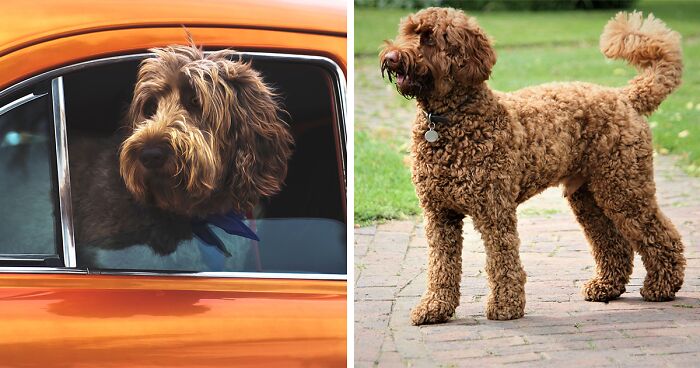
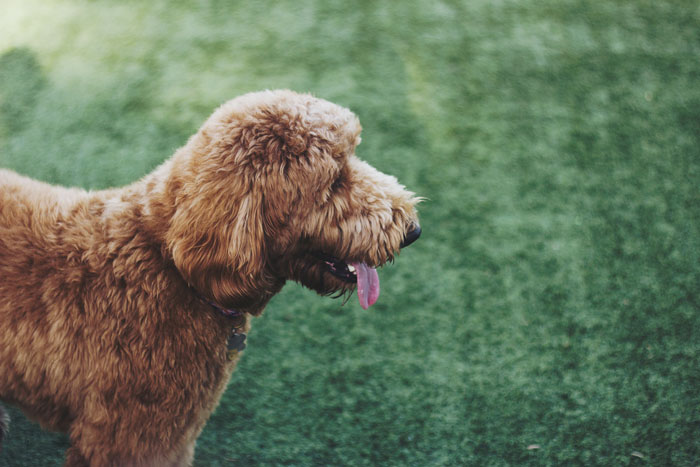
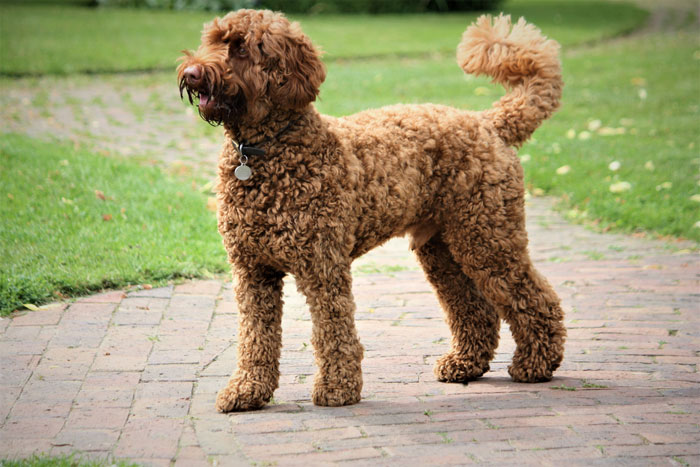
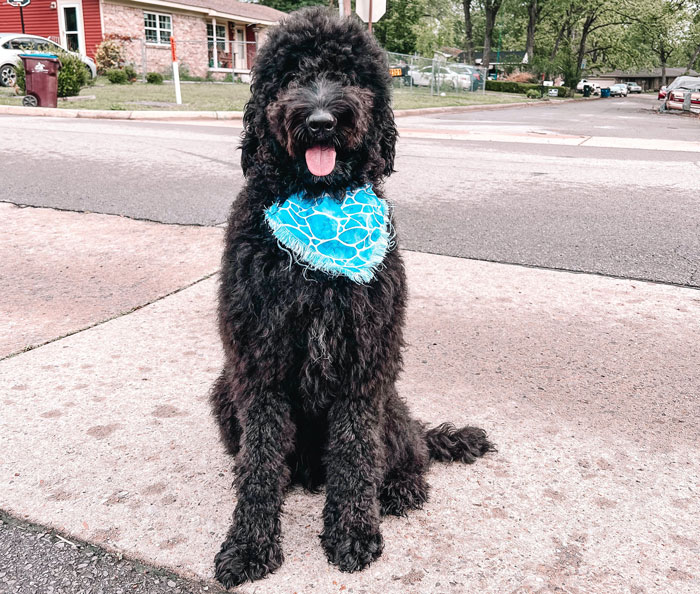

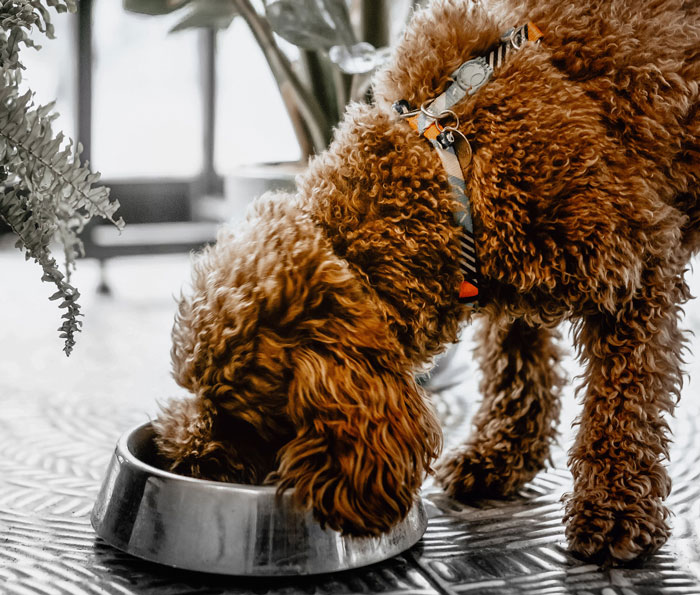
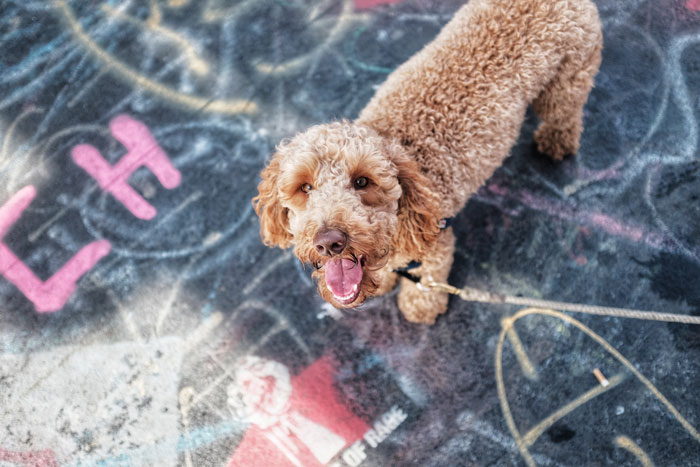
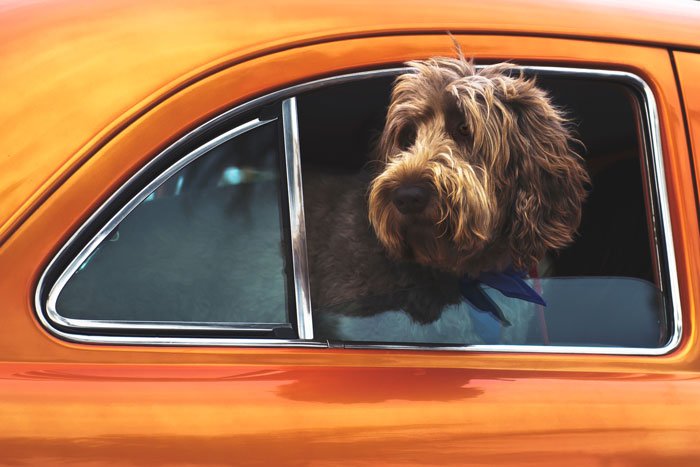













































-1
4